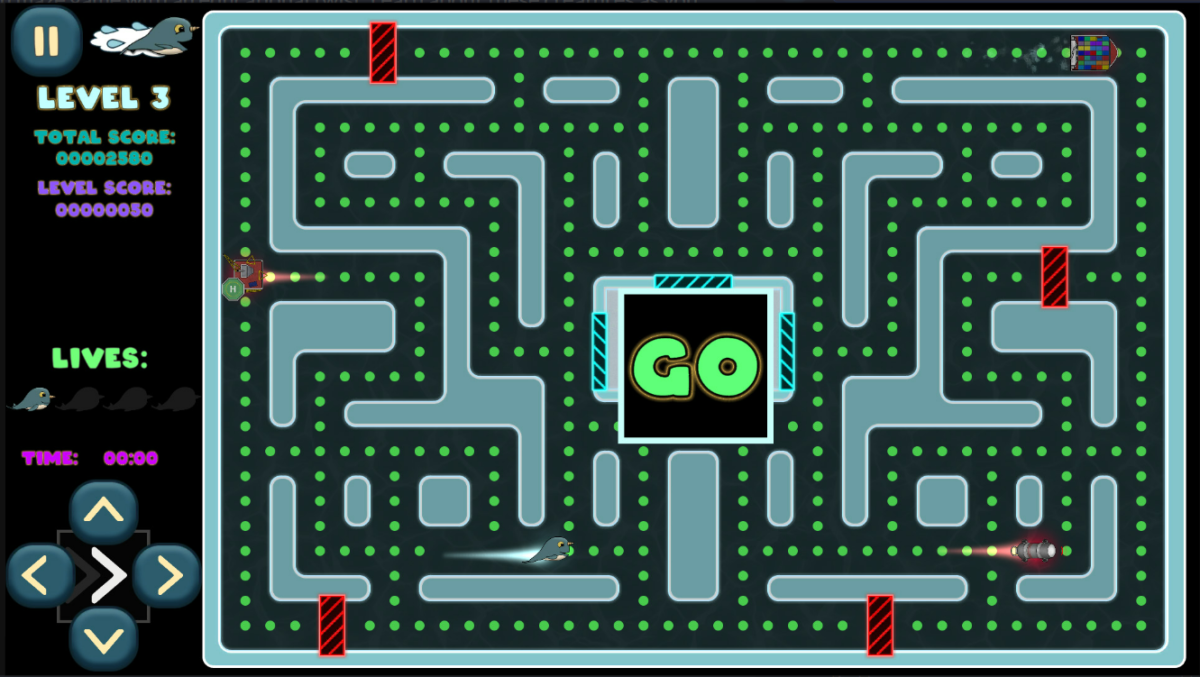A new video game to highlight the importance of animal migration in the ocean and how humans are disrupting these movements and impacting their ability to survive and reproduce.
Blogs are written by COST Actions

COST Action ‘Unifying Approaches to Marine Connectivity for improved Resource Management for the Seas’ (SEA-UNICORN) brings together a broad interdisciplinary community of scientists, stakeholders and policymakers. It aims to foster interdisciplinary collaborations and share expertise at local, regional, and international levels to advance knowledge and unify concepts and approaches in the emerging field of Marine Functional Connectivity (MFC).
One of the main aims of our Action is to improve knowledge and understanding of how marine species are connected. When reflecting on the ways we might be able to engage with stakeholders, we decided that a fun video game featuring charismatic animals like turtles, whales and salmon would help us reach a younger audience. As such, we embarked on co-developing a fun maze-based video game with an educational twist.

Inspired by retro classic Pac-Man, the ‘Maze of Misfortune’ was designed to help people understand the importance of movement in the ocean and marine connectivity.
Maze of Misfortune
In the game, you play as Sammy the Salmon, Tilly the Sea Turtle, and Nora the Narwhal with an overall goal to help these ocean travellers navigate the Maze of Misfortune and reach their breeding grounds. You have to answer educational questions to open blocked paths and in doing so, learn about the dangers these amazing creatures face every day. All the while you are also trying to help them escape from enemies that represent real world hazards, such as invasive species, discarded plastic, and ship collisions. You also have to survive random events such as storms and heat waves, while eating as much food as you can to get a high score and a place on the leader board.

The game is primarily aimed at 8-18 year olds, but we have also seen kids as young as three years old enjoying it and sometimes getting lucky with the multiple choice questions!
Ultimately, we want the players to learn about the creatures as they play, their lifecycles and habitat needs, the dangers they face, and the damage that humans are causing to our seas and oceans.
Exploitation
Maze of Misfortune was launched at the Royal Society Summer Science Exhibition 2022 in London with the game forming part of the Ocean Travellers exhibit.
The event attracted around 7,000 visitors this year, so was an excellent opportunity for public outreach. The exhibit featured various interactive displays across three ‘worlds’ (‘micro’, ‘meso’ and ‘macro’), highlighting the importance of movement at all scales and the impacts that human activities are having on them. ‘Microworld’ focused on tiny but critical movements, such as the loss of dinoflagellates from corals during bleaching events, while ‘Macroworld’ – which included the game – explored large scale movements, such as the transoceanic migrations of whales and sharks that connect the tropics to the poles.



Overall the game was well received, with most players playing on it for at least 5-15 minutes. Being our first time developing a game, some of the questions were perhaps a little too difficult for the younger players, but most people said that they enjoyed it and learned lots from playing it. Also, after a few goes they were getting more of the questions correct, suggesting that the information was being retained. In the future we aim to translate the game into other languages and to start sharing it with school teachers to increase outreach and uptake.
Come and play
Download the game onto your PC or android phone via this link scan the QR code.
About the author
Dr Anna Sturrock is co-leader of SEA-UNICORN’s Working Group 1 which looks into improving knowledge on Marine Functional Connectivity and its drivers. She is an Assistant Professor in Marine Ecology and UKRI Future Leaders Fellow at the University of Essex, United Kingdom.

